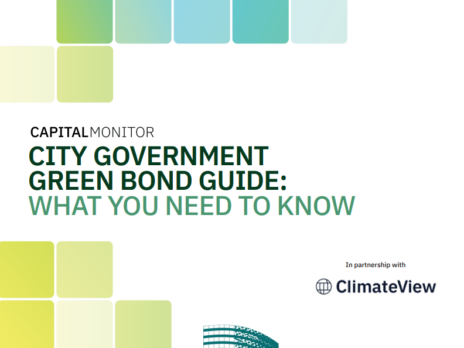
Cities have an integral role to play in driving the transition to a zero-carbon future. In terms of ambition, a growing number are increasingly recognising this responsibility, declaring net-zero targets that often go well beyond commitments made at a national level – and assuming leadership positions in the global decarbonisation debate.

However, translating ambition into practice can be a challenging endeavour. Cities do not typically enjoy the same access to capital markets and private finance as their national governments, and existing mechanisms for the mobilisation of finance towards green projects are not leading to carbon reductions at anywhere near the pace needed to curb the worst effects of climate change.
Bridging that financing gap and accelerating the direction of travel is therefore of paramount importance. In order to do so, cities are increasingly looking towards the raising of sustainability-linked bonds to support their net-zero ambitions.
Green bond white paper
In order to study this trend further, Capital Monitor, in partnership with ClimateView, a Swedish tech company that enables cities to plan, manage and fund the transition to net zero, has published the City Government Green Bond Guide. This report takes a deep dive into issuance activity, looking at who is raising green bonds, where and at what volumes, as well as issuance trends to be aware of over the coming years. It also provides cities looking to start out on this journey with a step-by-step guide for raising bonds of their own.
The City Government Green Bond Guide offers much cause for optimism for those seeking to raise such funds. It reports that total green bond issuance, an asset class that only came into existence in 2007, hit the $2trn mark in 2022. Local government debt may form a relatively small proportion of that, but it is growing healthily. Furthermore, despite challenging economic conditions, it expects green bond issuance to rebound this year, as interest rates plateau and government policy drives further action.
The guide breaks down the most active green bond issuers, and takes a deep dive into the US municipal green bond market, where institutions have issued nearly half of the global volume of green debt historically. It also analyses all tranches of more than 150 green bonds issued between 2019 and 2022, breaking down average coupon rates by market.
The step-by-step guide for cities looking to issue green bonds of their own outlines best practices for municipal leaders when it comes to identifying projects for financing, seeking an independent review of one’s commitments, investor relations and tracking progress.
“Green bonds are an increasingly important capital-raising tool for local governments as they look to address carbon emission commitments,” says Daniel Flatt, Capital Monitor editor-in-chief and the report’s co-author.
“Transparency and a good working understanding of investors’ needs are vital in being successful in the public markets. We believe the City Government Green Bond Guide can play a very useful role in helping to build that knowledge and understanding.”







